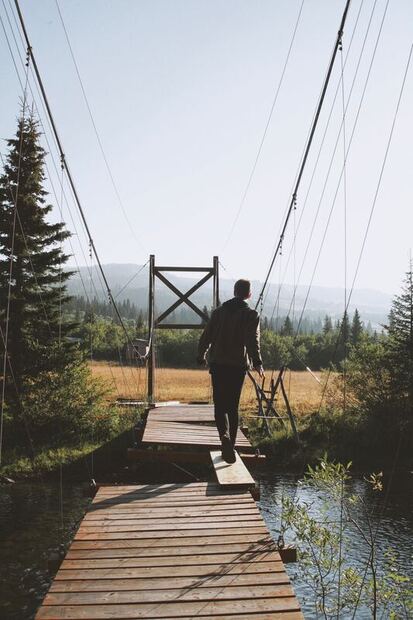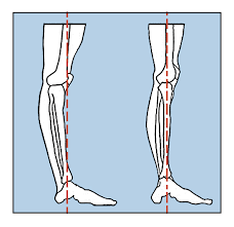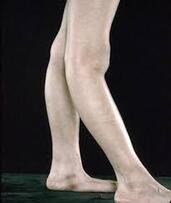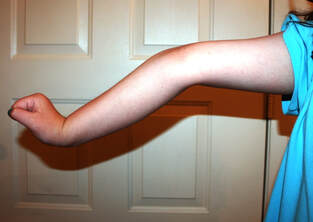|
Ask these few questions to yourself:
PosturePosture is merely a reflex of your environment that you put yourself in, most of the times. If you see a long distance runner, they have different body types than a runner, a sedentary person who works in the office will have different posture than a person working as a tour guide, a powerlifter stands erect and a person who is an introvert is slouched over and so on. Exercise is invented to help minimise the lifestyle habits of the modern age of computer and sedentariness, you know, lifestyle habits. Posture tells us a few things as well if you are sad, happy, scared or grieving etc. To a trained eye, posture always draws a line of tension and could sometimes affect your health and well being, as, if your posture is not optimal enough for blood to flow in the body, parts of wherever isn't getting enough blood, now, gets suffocated and can't function well enough, causing you pain and in the long run, a manifestation of illnesses or diseases(health conditions). Pain & discomfortWhen the body gets to the point of slight irritation, you will get slight discomfort. After which, your body tries and adapts to the new "posture" and if it can't conform to it due to constant line of tension from another activity, you get to the next stage of which is known as pain. Pain is the most indirect way of your "body talking" to you, saying that there is/are compensation(s) & line of tension is increasing, not decreasing. Your body is not happy and in turn finds a way for the "user"(you) to get a form of red light flashing when a part of a car is faulty and needs attention. Think of our muscles as the cables that holds our skeleton, and our skeleton the structure(pic above). Each time a cable is tightened up, the bridge has a compensation and the integrity of the bridge is compromised slightly more, every little bit a cable is adjusted(tightened). Pain, sets in two ways, one, is a direct impact to your body, and the second, is an accumulated process. Usually when we get the feeling of discomfort, we just shrug it off and get on with life, but only, and only when pains sets in, we start looking for the last activity and put the blame finger on it. Pain is categorised in two parts:
Factors on injuriesAcute injuries if not properly healed, can have a build up of fibrotic tissue, which can cause restriction with a particular movement, and chronic injuries usually creates a faulty movement patterning. You have to ask yourself, are you moving differently to avoid pain, or is pain making you move differently. Our brain tells the body to create or find another path so that it doesn't have to go through trauma, and create pain stimulus, so when you get any form of injury, you have to ensure that you don't stay immobilised for long periods of time, contrary to the beliefs of not moving due to an injury to keep the healing process going(depends on your injury). A full recovery where the tissues are fully organised for future loading upon loading, takes anywhere from 12 months to a few years, depending on individual's healing process and what you do while allowing the process to take place. This is the same reason why most people, when they have a sprain or tear a tissue, they land on the same injury, because the connective tissues are not fully healed and organised. Think of it as a building that has its structure shifted`(pic 2), you cannot put anything on top of it, versus a building that is straight(pic 2.1), you can stack more weights on the top of it without crumbling. The pictured(2.2) shows a before, after and a fully healed ligament of a rat. The middle picture of 2.2 is when after an injury has healed and it's relevant to most of us that gets injured as mentioned earlier, this is where we usually are(after injury) and we start playing sports without the full regeneration of the connective tissue. The last picture from the 2.2 is a fully healed tissue, not the best but definitely better than the middle one. The key to not having the same injury flare up is to allow full regeneration with proper selective movement to encourage healing and best reorganisation of the injured tissues. If you haven't read about preventing injury on knee and overall joints, read it here. Is flexibility & mobility the same?The word has been used interchangeably so much so that many of us actually think they're the same! The Difference between them is: Flexibility refers to the ability of your soft tissue (muscles) to stretch(think about touching your toes and staying there). Mobility, on the other hand, is the ability to take a joint that contribute to movement with full range of motion. In short, flexibility= muscles, & mobility= joint movement. So as you now realise, you may be flexible but not be able to take your let's say, hip joint through it's full mobility of your hip joint and and so on. I'm already flexible & mobileIf you are then you can start by seeing if your joints are hyper-mobile by the pictures provided below. We have provided both the knee and elbow joints due to the fact that they are mostly used during walking and pushin, & that they are more susceptible to injuries. Simple flexibility & mobility testTest 1. Toe touch Can you touch your toes without bending the knees? If you are hyper-mobile, slightly unlock the knees so that they are not having too much force whilst doing this test. If you can touch your toes, you are mobile & is in the ideal range of motion. If not there is work to do. Test 2. Squat test Can you do a full squat AKA asian squats? If you can do a full asian squat and stay down comfortably, then you are both mobile and stable, otherwise, you would have mobility issues that you would need to work on. Can i watch Youtube and read?Absolutely! Have you ever watched a youtube video of someone being in a concert of eating a cake, stroking a cat, falling off a curb and so on? Sure we have watched something online, but have you pondered and realised that you can't actually experience it? Reading and watching something can never be the same as being able to stretch in person with someone suggesting the right position(s) or the right way your body needs to adjust. Where to go for stretchingWhile there are a few places & professionals to get yourself stretched out, find a centre or a facility that has professionals dedicated to this. Here are a few places and type of stretch you can find out on:
0 Comments
Leave a Reply. |
Location151 A #02
Kitchener Road S(208526) Train Station: Farrer Park |
|








 RSS Feed
RSS Feed